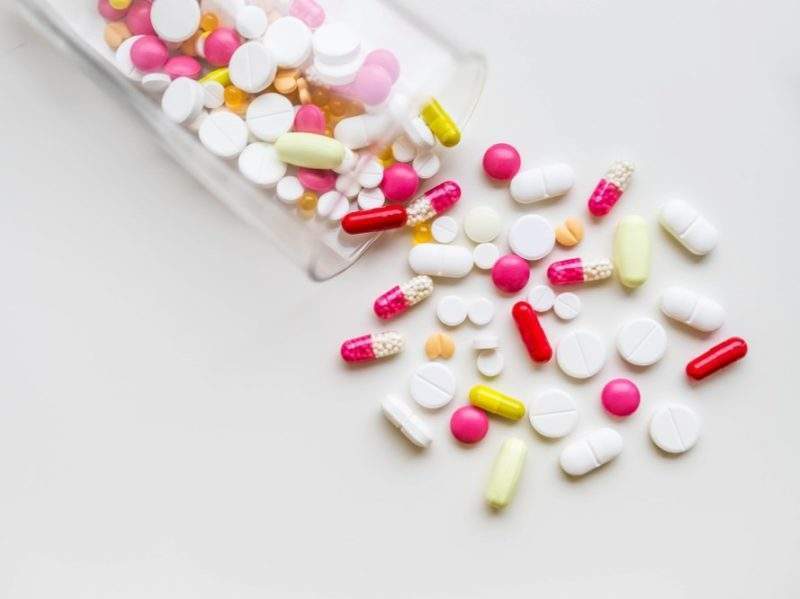
Over the past 30 years, international organisations and the pharmaceutical industry have begun to notice that the detrimental impact pharma products have on the environment on a global scale.
Pharmaceutical products enter the environment at various stages of their life-cycle, but particularly during the production phase. One of the main threats is that discharging antibiotics into the environment can promote the natural development of antibiotic-resistant pathogens that are harder to treat. Lord Jim O’Neill noted this trend in his 2016 UK government-funded independent Review on Antimicrobial Resistance.
Although it is a global issue, like other environmental issues, pharma pollution more directly and seriously affects those living near production plants whose water and food sources are contaminated with waste pharma products.
Health Care Without Harm (HCWH) Europe runs the Safer Pharma campaign to raise awareness of the negative relationship between pharma and the environment and challenge the healthcare industry to clean up its production.
“The production of both active pharmaceutical ingredients (APIs) and finished dose antibiotics is concentrated in specific locations so the resulting point, source pollution, is in incredibly high concentrations and encourages the development of drug resistance,” says HCWH Europe pharmaceuticals policy officer Dr Adela Maghear. “This practice has a detrimental impact on vulnerable populations living near manufacturing facilities and wastewater treatment plants in these countries.”
The pollution of pharma products into the environment also adversely affects animals, particularly fish living in contaminated water. For example, a report published in science journal Nature in 2009 noted that ‘many of Europe’s rivers are home to male fish that are ‘intersex’ and so display female sexual characteristics, including female reproductive anatomy. Some males also produce vitellogenin, a protein normally found in eggs that can be induced in males by hormone exposure’.
How well do you really know your competitors?
Access the most comprehensive Company Profiles on the market, powered by GlobalData. Save hours of research. Gain competitive edge.

Thank you!
Your download email will arrive shortly
Not ready to buy yet? Download a free sample
We are confident about the unique quality of our Company Profiles. However, we want you to make the most beneficial decision for your business, so we offer a free sample that you can download by submitting the below form
By GlobalDataAnother large study of this problem in 2004 by the UK government’s Environment Agency found that 86% of male fish sampled at 51 sites around the country were intersex.” This phenomenon is blamed upon pollution of the contraceptive pill and its API, ethynyl oestradiol.
Reforming the relationship between pharma and the environment
This awareness has led to a number of initiatives to try to better understand the consequences of pharma production on the environment and how this can be mitigated.
An early initiative was the European Commission’s environmental risk assessment of pharma products (ERAPharm). Between 2004 and 2007, ERAPharm tracked the fate and effect of pharma products in the environment in order to educate and inform legislators. It primarily focused on three compounds: the ß-blocker atenolol, fluoxetine, an anti-depressant, and the veterinary parasiticide ivermectin.
In Europe, this was followed by, among others, commitments by the European Federation of Pharmaceutical Industries and Associations (EFPIA) to reduce the presence of pharmaceuticals in the environment.
Unfortunately EFPIA’s primary course of action seems to be to push the burden of responsible pharma disposal to patients, according to Maghear, ‘This moves focus away from the fact that pharmaceutical companies should be cleaning up their own production and supply chains and investing in biodegradable pharmaceuticals’.
She believes: “Solely focusing on one pathway, as the EFPIA declaration suggests, will not ensure long-term protection of the environment.”
However, despite recognition of the destructive impact the pharma industry has on the environment, the US Food and Drug Administration and European Medicines Agency have not moved to include environmental standards in their good manufacturing practices guidelines.
In addition, there is a lack of legislation and regulation on a local, regional and global level focusing on reducing the negative impact of the pharmaceutical industry on the environment; for example, Maghear explains there is no legislation requiring pharma companies to report environmental incidents.
Non-governmental organisation (NGO) Changing Markets, which has organised awareness campaigns on the issue of pharmaceuticals in the environment agreed, telling The Bureau of Investigative Journalism in January: “There is a crying lack of transparency about pharmaceutical supply chains which means that we know practically nothing about where our drugs are made. This is a scandal and pharmaceutical companies will face increasing calls to do something about it.”
The main role of HCWH Europe’s Safer Pharma campaign, according to Maghear, is ‘to push the EU to be the first region to legislate on pharmaceutical pollution – leveraging health professionals’ leadership role in tackling this issue’. They have made some progress, however, there is a long way to go and environmental breaches continue to occur across the world.
Case study: contaminated water in Hyderabad, India
In November 2016, German scientists found that all of the specimens collected from sampling sites in the direct environment of bulk drug manufacturing facilities in Hyderabad and nearby villages, known as the Patancheru-Bollaram zone, India, were contaminated with antimicrobials.
They also found 95% contained worryingly high levels of bacteria and fungi resistant to antibiotic drugs.
These findings led the researchers to conclude: “Insufficient wastewater management by bulk drug manufacturing facilities leads to unprecedented contamination of water resources with antimicrobial pharmaceuticals, which seems to be associated with the selection and dissemination of carbapenemase-producing pathogens.” The findings were published in the Infection journal in August 2017.
Hyderabad is where 50% of India’s drug exports are produced – there are approximately 170 companies operating in the area – and India is the world’s fifth largest producer of generic drugs.
A contributor to the study, German media company NDR, found that 19 companies operating in the area were suppliers of antibiotics to the European market.
This grievous level of pharma pollution exists despite NGO, governmental and judicial pressure on companies operating in the area to clean up their act. In 2009, the Patancheru-Bollaram zone was classified in India’s national pollution index as ‘critically polluted’ and in 2016, the country’s Supreme Court ordered pharma companies to implement a zero liquid waste policy.
Safer Pharma notes that ‘contamination of water sources with antimicrobial drugs (combined with mass misuse of antibiotics and poor sanitation) has had grave consequences in India, where an estimated 58,000 new-borns die from multidrug-resistant infections every year’. These figures are based on a research project by Laximnarayan, Duse, Wattal et al published in The Lancet in November 2013.
The immense scale of the pollution problem from drug manufacturing has pushed Indian public health professionals, campaign groups and local people to call on the European Union (EU) to revise good manufacturing practices and include these considerations during factory inspections. The letter follows the EU’s announcement that it had scrapped plans to clampdown on pharma pollution.
Campaigners hope that pressure from local groups directly affected by the pharma industry’s pollution will persuade the EU to reverse its earlier decision and, along with the industry and other governments, fulfill its unmet promises to mitigate the environmental consequences of drug manufacturing.







